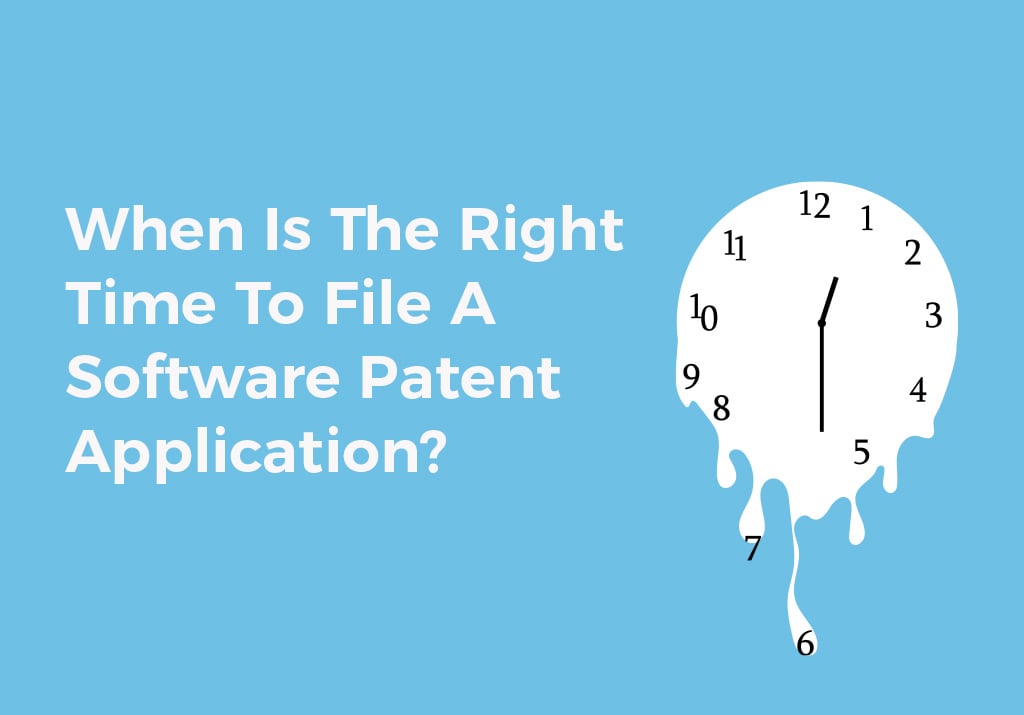When it comes to patents, The United States follows a strict first-to-file system. This means you need to give careful and calculated consideration to the timing of the patent filing, especially when the patent application is related to software.
There is a delicate balance to timing your patent application. The best thing to do is to consult with an experienced software patent attorney who can help guide you through the process and advise as to when the perfect time to file is.
In the meantime, this article will help you better understand the considerations you should factor in when determining the best time to file your patent application.
What First to File Means
For years, the United States Patent and Trademark Office (USPTO) granted the patent to the inventor who could prove that he or she created the invention first. But with the enactment of the America Invents Act in 2011, the US has since pivoted to awarding a notice of allowance to the first applicant to file the patent application, granted it meets patentability requirements.
The race to the patent office can be a challenge with software-implemented inventions because a lot can change between a beta version of a software and a final version, and not all of the functionality might be captured in the patent application if it is filed before the software-implemented invention is fully developed.
What Can Prevent You From Filing?
Waiting too long to protect key features with a patent can cause serious IP issues. If you decide to sell/market your software or allow public use, then you have a one year deadline to file. Look at the first date you publicly disclosed your software. When 365 days have passed, you are no longer able to file for a patent, unless you have made significant updates to the features you would like to protect.
If you have already sold or allowed your software to go public, you need to speak with a patent attorney as soon as possible. They may be able to quickly file a provisional patent to reserve your rights. Then they will help you with a complete non-provisional patent application when the time comes.
Timing Your Software Patent Filing
If your software is still in development, a provisional patent application can give you priority, allowing you to hold your place in line while you continue to develop and refine your software.
Provisional patent applications give you a year of “patent pending” status during which you can more safely discuss your invention with third parties, including developers, investors, and potential consumers. So long as you eventually file a non-provisional patent application before that year is over and you properly claim priority to the provisional patent application, then your non-provisional patent application gets the benefit of as though it had been filed on the date of the provisional
You don’t have to build or implement your software innovation to file for a patent. You do need to be able to describe your invention with enough detail that someone skilled in the art could create your invention without the need for “undue experimentation”.
If you aren’t confident that your invention can be implemented using current technology, then it doesn’t meet this enablement requirement.
Strategy of Waiting
In some cases, waiting to file may be the best choice. It may be smart to wait if you have not disclosed your invention in the public domain, but are very close to a beta release or launch. This way, you can file for a non-provisional patent right away and expedite the process.
Determine the Right Time to File
For Saas companies that base their business on proprietary software, patents are an invaluable asset that will separate them from their competitors and provide legal protections from infringement and misappropriation. Once a patent is issued for the software-implemented invention, patent owners enjoy:
- The right to exclude others from making or using the patented software
- The right to sue an individual or entity that infringes on the patent.
- The right to license the use, manufacture, reproduction, etc. of the patented
- The right to sell and/or assign the patent to someone else
Determining the right time to file is not a one size fits all answer. You should consider several factors including progress of development, competition, and the timing of release to the public domain.
The best strategy is to talk to an IP attorney early who is experienced in software patents so you can gain insights to when would be the right time to file based on your unique situation.
Click here to schedule a call with one of our IP attorneys. We love helping startup founders like yourself develop winning intellectual property strategies!
Related Article: Debunking the Biggest Software Patent Myths




